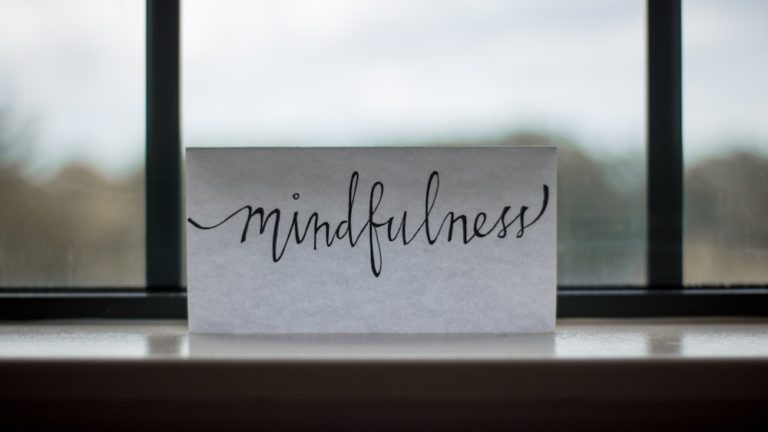7 Simple Steps: Mastering The 5 4 3 2 1 Grounding Technique
Hello there! Are you in search of a useful technique to help manage stress and anxiety? Look no further! In this article, we will guide you through the 5-4-3-2-1 Grounding Technique, a simple yet effective method to bring you back to the present moment and calm your mind. With just a few minutes of practice, you will be able to regain control and focus in any situation.
The beauty of this technique is that it can be practiced anywhere and at any time. Whether you’re experiencing a sudden surge of anxiety at work, or simply looking for a way to unwind after a long day, the 5-4-3-2-1 Grounding Technique can be your go-to coping strategy. So, let’s dive into the basics and start mastering this life-changing technique!
The Basics of the 5-4-3-2-1 Grounding Technique
To understand the true power of the 5-4-3-2-1 Grounding Technique, it’s essential to comprehend its core components and how they work together to create a calming effect on the mind and body.
What is the 5-4-3-2-1 Grounding Technique?
The 5-4-3-2-1 Grounding Technique is a mindfulness exercise designed to help individuals experiencing anxiety, stress, or panic to anchor themselves in the present moment. The technique involves identifying and focusing on various sensory experiences to create a sense of grounding and stability.
By engaging all five senses (sight, touch, hearing, smell, and taste), the technique allows the individual to shift their focus from intrusive thoughts and emotions to the present environment. This redirection of attention helps to alleviate feelings of anxiety and stress.
Use the 5-4-3-2-1 Grounding Technique to alleviate feelings of anxiety and stress by engaging all five senses to shift focus from intrusive thoughts and emotions to the present environment.
How does it help with anxiety and stress?
Anxiety and stress often result from a cycle of negative thoughts and emotions that are difficult to break free from. The 5-4-3-2-1 Grounding Technique works by interrupting this cycle and refocusing the mind on the present moment, thereby promoting relaxation and mental clarity.
By engaging all five senses, the technique provides a strong anchor to the present moment, making it difficult for the mind to wander back to anxiety-provoking thoughts. Additionally, the act of consciously observing and engaging with the environment stimulates the parasympathetic nervous system, which helps to promote a state of calm.
Step-by-Step Guide to Mastering the Technique
Now that we understand the basics, let’s dive into the step-by-step process of mastering the 5-4-3-2-1 Grounding Technique.
1. Identifying Five Things You Can See
To begin the grounding process, take a moment to look around and identify five things you can see in your environment. These can be objects, colors, or even shapes. The key is to focus on each item individually, paying close attention to its details and characteristics.
For example, you might notice:

- The vibrant green leaves of a nearby plant
- The intricate pattern on your shirt
- The way the sunlight casts shadows on the wall
- A colorful book on the shelf
- The movement of a person walking by
2. Noticing Four Things You Can Touch
Next, shift your focus to your sense of touch. Identify four items that you can physically feel. This can include the texture of an object, the sensation of clothing on your skin, or even the feeling of your own breath.
Some examples could be:
- The smooth surface of your desk
- The warmth of your hands in your lap
- The soft fabric of your shirt
- The cool air from an air conditioner on your face
3. Acknowledging Three Things You Can Hear
Now, tune into your sense of hearing. Acknowledge three sounds that you can hear in your environment. These can be sounds from the outside world or even your own body, such as your breathing or heartbeat.
For instance, you might hear:
- The hum of the refrigerator
- The distant sound of traffic
- The rustling of papers on your desk
4. Recognizing Two Things You Can Smell
As you progress through the 5-4-3-2-1 Grounding Technique, it’s time to focus on your sense of smell. Identifying two different scents around you can help you reconnect with the present moment. This step encourages you to heighten your awareness of your environment and bring your mind back to the present.
It might be the faint whiff of coffee brewing in the kitchen, or the scent of fresh laundry. Don’t worry if you can’t find two distinct smells; simply focus on what you can perceive. By concentrating on these scents, we’re allowing our minds to anchor onto something tangible, helping to reduce the effects of anxiety and stress.
5. Savoring One Thing You Can Taste
Finally, we’ve arrived at the last sensory experience – taste. For this step, try to find something you can taste, even if it’s very subtle. It could be the lingering flavor of your last meal, the taste of your toothpaste, or a piece of gum. If you don’t have anything in your mouth, you can also focus on the sensation of your tongue resting in your mouth.
The purpose of this step is to bring your full attention to the sensation you’re experiencing, and by focusing on this one simple thing, you’re able to ground yourself in the present moment. Remember, this technique is all about engaging your senses to alleviate anxiety and stress.
Additional Grounding Techniques for Anxiety Relief
Apart from the 5-4-3-2-1 Grounding Technique, there are other methods you can use to help relieve anxiety. These additional grounding techniques can be used in conjunction with the 5-4-3-2-1 method or on their own, depending on your preference and situation.
6. Body Awareness and Mental Exercises
One effective grounding technique is body awareness. This involves focusing on different parts of your body, starting from your toes and working your way up. Feel the sensations in each body part and take note of any tension, relaxation, or other feelings.
Mental exercises can also help with grounding. For example, you can try counting backward from 100, reciting the alphabet backward, or naming cities that start with each letter of the alphabet. These exercises require concentration and can help to distract your mind from anxious thoughts.
7. Engaging in Mindfulness Practices
Mindfulness practices are another powerful tool for anxiety relief. Mindfulness is the act of being fully present in the moment, consciously focusing on your thoughts, feelings, and sensations without judgment. Common mindfulness practices include:
- Meditation: Regular meditation can help train your mind to be more present and less reactive to stress and anxiety triggers.
- Mindful breathing: Focusing on your breath and taking slow, deep breaths can help to center your mind and body.
- Body scan: This practice involves mentally scanning your body from head to toe, noticing any sensations or areas of tension.
By incorporating mindfulness into your daily routine, you can improve your overall mental well-being and better manage anxiety.
Incorporating mindfulness practices such as meditation, mindful breathing, and body scanning into daily routines can improve mental well-being and manage anxiety.
When and How to Use the 5-4-3-2-1 Grounding Technique
Now that you’re familiar with the 5-4-3-2-1 Grounding Technique and additional anxiety-relief methods, let’s discuss when and how to use them effectively.
Situations to Apply the Technique
The 5-4-3-2-1 Grounding Technique can be used in various situations, including:
- When you’re feeling overwhelmed or anxious
- Before entering a stressful situation, such as public speaking or a job interview
- To help you refocus during moments of distraction or procrastination
- As a daily practice to build mindfulness and stress resilience
Remember, practice makes perfect. The more you use the 5-4-3-2-1 Grounding Technique, the more effective it will become in helping you manage anxiety and stress.
Tips for Maximizing the Benefits
To truly maximize the benefits of the 5-4-3-2-1 Grounding Technique, it’s essential to practice regularly. The more you practice, the more natural it becomes, and the quicker you’ll find relief from anxiety. Take the time to fully engage with each step, paying close attention to the details of the things you observe. Another tip is to be patient with yourself; don’t expect immediate results. As with any skill, it takes time and dedication to master.
FAQs
1. Can the 5-4-3-2-1 Grounding Technique be used for other mental health issues?
Yes, the 5-4-3-2-1 Grounding Technique can be beneficial for various mental health issues, such as depression, PTSD, and panic attacks. It helps individuals feel more grounded and present, easing overwhelming thoughts and emotions.
2. How long does it take to see results from using the technique?
The time it takes to see results from using the 5-4-3-2-1 Grounding Technique can vary for each individual. Some people might experience immediate relief, while others may require consistent practice over a few weeks or months to notice significant improvements.
3. Can children and teens benefit from the 5-4-3-2-1 Grounding Technique?
Absolutely, children and teens can benefit from the 5-4-3-2-1 Grounding Technique. It’s a simple and effective method that can be easily adapted for various age groups. It teaches them to become more aware of their surroundings, promoting mindfulness and calming anxious thoughts.
4. Are there any potential side effects or risks associated with using the technique?
There are no significant side effects or risks associated with using the 5-4-3-2-1 Grounding Technique. It’s a non-invasive and natural method designed to promote relaxation and mindfulness. However, remember that it should not replace professional therapy or medical treatment for mental health issues.
Conclusion
The 5-4-3-2-1 Grounding Technique is a practical and straightforward method for managing anxiety and stress. By engaging your senses and redirecting your focus to the present moment, you can alleviate overwhelming thoughts and emotions. It’s essential to practice consistently and be patient with yourself as you work towards mastering this technique.
Remember that everyone’s journey with mental health is unique, and what works for one person may not work for another. It’s crucial to explore various techniques and strategies to find what works best for you. With dedication and practice, the 5-4-3-2-1 Grounding Technique can become an invaluable tool in your mental health toolkit, helping you live a more balanced and mindful life.
I wish you the best! Fabian.
Share with your Friends:






